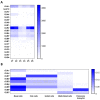Intercellular Communication in Airway Epithelial Cell Regeneration: Potential Roles of Connexins and Pannexins
- PMID: 38003349
- PMCID: PMC10671439
- DOI: 10.3390/ijms242216160
Intercellular Communication in Airway Epithelial Cell Regeneration: Potential Roles of Connexins and Pannexins
Abstract
Connexins and pannexins are transmembrane proteins that can form direct (gap junctions) or indirect (connexons, pannexons) intercellular communication channels. By propagating ions, metabolites, sugars, nucleotides, miRNAs, and/or second messengers, they participate in a variety of physiological functions, such as tissue homeostasis and host defense. There is solid evidence supporting a role for intercellular signaling in various pulmonary inflammatory diseases where alteration of connexin/pannexin channel functional expression occurs, thus leading to abnormal intercellular communication pathways and contributing to pathophysiological aspects, such as innate immune defense and remodeling. The integrity of the airway epithelium, which is the first line of defense against invading microbes, is established and maintained by a repair mechanism that involves processes such as proliferation, migration, and differentiation. Here, we briefly summarize current knowledge on the contribution of connexins and pannexins to necessary processes of tissue repair and speculate on their possible involvement in the shaping of the airway epithelium integrity.
Keywords: connexins; epithelial differentiation; epithelial repair; epithelial signaling; intercellular communication; lungs; pannexins.
Conflict of interest statement
The authors declare no conflict of interest. The funders had no role in the design of the study; in the collection, analyses, or interpretation of data; in the writing of the manuscript; or in the decision to publish the results.
Figures





Similar articles
-
Pannexin channels are not gap junction hemichannels.Channels (Austin). 2011 May-Jun;5(3):193-7. doi: 10.4161/chan.5.3.15765. Epub 2011 May 1. Channels (Austin). 2011. PMID: 21532340 Free PMC article. Review.
-
Expression and role of connexin-based gap junctions in pulmonary inflammatory diseases.Pharmacol Ther. 2016 Aug;164:105-19. doi: 10.1016/j.pharmthera.2016.04.004. Epub 2016 Apr 25. Pharmacol Ther. 2016. PMID: 27126473 Review.
-
Next-Generation Connexin and Pannexin Cell Biology.Trends Cell Biol. 2016 Dec;26(12):944-955. doi: 10.1016/j.tcb.2016.06.003. Epub 2016 Jun 21. Trends Cell Biol. 2016. PMID: 27339936 Review.
-
Are there gap junctions without connexins or pannexins?BMC Evol Biol. 2019 Feb 26;19(Suppl 1):46. doi: 10.1186/s12862-019-1369-4. BMC Evol Biol. 2019. PMID: 30813901 Free PMC article.
-
Role of connexins and pannexins in cardiovascular physiology.Cell Mol Life Sci. 2015 Aug;72(15):2779-92. doi: 10.1007/s00018-015-1959-2. Epub 2015 Jun 20. Cell Mol Life Sci. 2015. PMID: 26091747 Free PMC article. Review.
Cited by
-
Pannexin channels in inflammation and tumorigenesis.Front Cell Dev Biol. 2025 Aug 20;13:1647765. doi: 10.3389/fcell.2025.1647765. eCollection 2025. Front Cell Dev Biol. 2025. PMID: 40909173 Free PMC article. Review.
References
Publication types
MeSH terms
Substances
Grants and funding
LinkOut - more resources
Full Text Sources
Medical
Molecular Biology Databases
Miscellaneous

